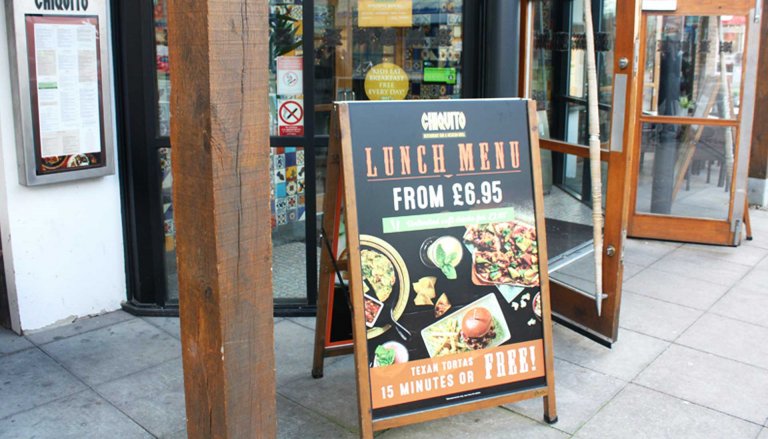In 2017, renowned restaurant chain Chiquito (now a part of The Restaurant Group) announced a radical menu overhaul and brand shift as part of the new plan by chief executive Andy McCue’s to revitalise the business. Prior to 2017, the chain had seen a like-for-like sales decline in and issued three profit warnings since November 2015.
In this article, we briefly examine the details of the rebrand, whether it has worked and what your business can learn from a restaurant branding perspective.
The Chiquito brand’s historic claim to fame has been large sites, that catered well to parties, students and tourists and served up “Tex-Mex” food, rather than authentic Mexican fare. Their USP was arguably a “feel good” factor that the brand became renowned for. Cheap cocktails, large menus, affordable food that lent itself well to sharing and a festive vibe were the key brand drivers
Since 2015 Mexican food has been riding a popularity wave in the UK. There has been a surge in the number of “authentic” Mexican restaurants opening their doors and The Guardian newspaper mentions that “in 2016 alone, the number of Mexican restaurants, led by brands such as Wahaca and Barburrito, has risen by 71%. The growth has even outstripped the upmarket burger phenomenon, which has seen newcomers Byron and Five Guys mount a serious challenge to McDonald’s and Burger King.”
So why in the face of this increasing appetite for Mexican food has Chiquito failed to retain market share and grow?
Over the years, market trends created a quantum shift in restaurant brands and Chiquito failed to keep pace and evolve their brand with macro trends. These have included authentic dining experiences, smaller portions, simpler menus, a focused delivery offering, a focus on nutrition, catering to dietary preferences and intolerances, digital transformation and brand advocacy.
There has no doubt been a brand response from Chiquito in terms of concept adaptation, menu engineering, focussed on a more authentic offering and smaller plates, as well as street food trucks and openings at airports. Has it worked or did it come too late?
The ultimate measure of a restaurant brand’s success is the end consumer perception and experience. A study of Chiquito’s reviews would suggest that the brand response has been muddled and customers are struggling to perceive a clear USP. Many customers bemoan the loss of the previous offering, commenting that “the menu has changed for the worse” and “portions have become smaller”, whilst others are unsure if the offering is authentic or a “Tex Mex” offering.
The response thus far demonstrates that new menus by themselves don’t deliver ROI unless a consistent and cohesive brand experience is being delivered – and this is clearly where the Chiquito brand stills falls short of the mark.
Until there is a distinctive experience that is reflected in every touch point from the menu to the decor of each site, the music, the service style, the presentation of the food and of course the visual branding and marketing, Chiquito’s brand transformation will be incomplete and it will fail to compete with category competitors that deliver a cohesive brand that can capture hearts, minds and of course tastebuds.


